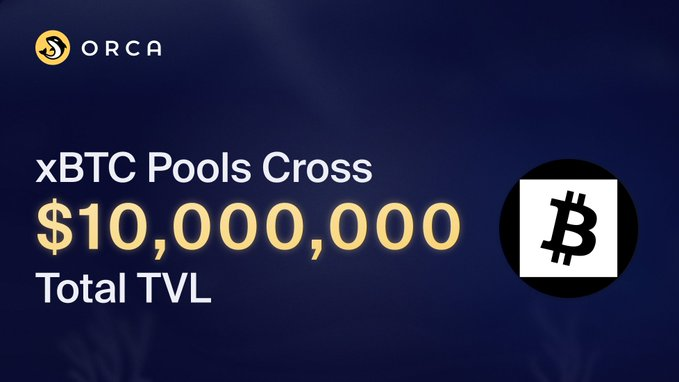
Orca is the most trusted decentralized exchange (DEX) in the Solana ecosystem, known for its “people-first” design and high capital efficiency. Through concentrated liquidity “Whirlpools,” dynamic fees, and an intuitive interface, it aims to deliver low slippage and low fees for both novice and experienced traders. This Innovation and Tech article will deeply dissect its core advantages, functional highlights, governance model, and future ecosystem layout, helping readers fully understand the DeFi market on Solana.
Summary: Orca centers on user-friendliness and capital efficiency, offering concentrated liquidity Whirlpools, Fair Price Indicator, one-click Zap-In; fair token distribution; and DAO-driven protocol upgrades.
What are Orca’s Core Advantages?
Built on human-centered design and peak performance, Orca truly makes “DEX accessible to everyone”: its clean and intuitive interface enables quick swaps on both desktop and mobile; Solana’s underlying performance ensures each transaction completes in under a second with fees as low as $0.00025, providing a smooth experience even during high-frequency trading or market peaks. Meanwhile, maintaining a zero-security-incident record for over four years, Orca upholds the principles of “professionalism, integrity, and fun,” offering a reliable, transparent, and easy-to-use environment for DeFi users.
What are Orca’s Core Functions?
According to academy reports, Orca’s proprietary Whirlpools concentrated liquidity model allows liquidity providers to allocate capital within specific price ranges, significantly boosting capital efficiency and fee earnings; the Fair Price Indicator warns in real time of potential high-slippage trades, aiding users in making optimal decisions; the Zap-In feature lets single-asset holders join a pool with one click—no manual splitting required—enhancing convenience; additionally, Launch Bowl provides new projects with fair liquidity bootstrapping, helping them launch quickly and gain community support.
How Does Orca’s Governance Model Operate?
Token Distribution
Total supply: 1 billion ORCA. According to Messari, allocation and unlocking schedules are:
-
Early User Airdrop 5.25% (52.5 M): Rewards users who provided liquidity and trading depth before and shortly after mainnet launch; no lock-up; unlocked immediately at TGE.
-
Core Team 20% (200 M): Incentivizes core development and operations teams; 12-month lock-up; 24-month linear release thereafter.
-
Round 1 Investors 9.6% (96 M): Early VCs and strategic partners; 6-month lock-up; 18-month linear release thereafter.
-
Liquidity Incentives 40% (400 M): Phased injections into various Whirlpools and standard pools to maintain depth and incentivize LPs.
-
Ecosystem Development Fund 15% (150 M): Funds community projects, hackathons, audits, and marketing; disbursed quarterly.
-
Advisors & Partners 10.15% (101.5 M): Reserved for strategic and technical advisors; 6-month lock-up; 12-month linear release thereafter.
This staggered schedule balances early incentives with long-term growth, managing supply and community engagement.
DAO-Driven Upgrades
-
Proposal Submission: Any token holder can propose new Whirlpools, fee adjustments, fund allocations, or upgrades—minimum 0.1% of total supply to submit.
-
Pre-Audit & Discussion: Public discussion on official forums or Snapshot, allowing community feedback.
-
On-Chain Voting: One ORCA = one vote; voting typically lasts one week.
-
Threshold & Execution: Requires ≥5% total supply participation and >50% support; executed via Gnosis Safe multisig or Timelock.
-
Transparency & Review: All proposals, votes, and executions are on-chain; disputes can trigger emergency reviews or new proposals.
Future Outlook & Ecosystem Collaboration?
Cross-Chain Interoperability & Bridging
– In-house Solana ↔ Ethereum bridge under development; partnerships planned with Wormhole, Allbridge, etc., supporting USDC/USDT flows for deeper liquidity.
Aggregator & Wallet Integrations
– Open-source SDK integrated by aggregators (Jupiter, Paraswap) and wallets (Phantom, Slope, Solflare); users will interact with Orca from their favorite DeFi dashboards.
Ecosystem Partners & Developer Grants
Quarterly hackathons and AMAs award up to 500 000 ORCA to top incubation teams focused on:
-
Liquidity Tools (auto-rebalancing, smart restaking)
-
Analytics Platforms (real-time depth/slippage monitoring)
-
Educational Content (tutorials, strategy guides)
Security & Audits
– Quarterly audits with Trail of Bits, Halborn; reports on GitHub; Immunefi bounty program for community security researchers.
Community Co-Build & Education
-
Governance Ambassador Program: regional meetups and webinars
-
Content Creator Rewards: incentives for high-quality videos, articles, tutorials
-
DAO Education Courses: on-chain governance and DeFi onboarding with Bundlr Network University
Through these initiatives, Orca reinforces its position as Solana DeFi’s “homepage” while expanding into a secure, innovative, multi-chain liquidity network.

FAQ
Orca is what?
A concentrated liquidity AMM DEX on Solana offering low slippage, one-click pool entry, and transparent governance.
How to provide liquidity?
Connect a compatible wallet, choose Whirlpools or a standard pool, deposit assets, receive LP tokens, and earn fees.
What’s the advantage of Zap-In?
Enables single-asset holders to join multi-asset pools in one click, automatically handling swaps and pool entry.
How to participate in governance?
Hold ORCA to submit proposals and vote on the DAO platform, shaping the protocol’s future.
Key Points
User-Friendly: Clean interface, Fair Price Indicator, safe & reliable.
Capital Efficient: Whirlpools & dynamic fees boost yields.
Seamless Experience: Low fees, sub-second confirmation, one-click Zap-In.
Community-Driven: Fair airdrop & on-chain DAO governance.
Multi-Chain Vision: Open-source SDK, cross-chain interoperability, ecosystem integrations.





